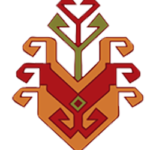The village of Ujan is located on the foot of Mount Aragats’ South-Western slope, in the Ashtarak Region of Armenia’s Aragatsotn Province and on the 35th kilometer of the Yerevan-Gyumri highway, being 1150 meters above sea level and 15 kilometers away from the provincial center.
The tens of caves, several cyclopean fortifications, grave fields, ancient sites and historical monuments that can be found in the vicinity of Ujan are proof that humans have lived here since time immemorial. The first written testimony comes to us from the IX century from Armenian Catholicos and historian Hovhannes Draskhanakerttsi. A few more written sources and stories passed on from generation to generation have helped establish that the settlement was previously known as Vdzan. During the reign of the Arsacid and later Bagratuni royal dynasties Vdzan was a military winter camp. In the XIII-XVI centuries this was one of the flourishing settlements of the region, which had a famous church and a school of all-Armenian importance, where many respected and noteworthy social and religious figures such as Melkisedek Vdzanetsi had studied. In the beginning of the XIX century Vdzan was depopulated of Armenians and resettled by a few nomadic Caucasian Tatar families, who lived here from the time, when Eastern Armenia got incorporated into the Russian Empire until the First World War, mainly using the area for pasture. It was also in the beginning of the XIX century that Vdzan came to be known as Ujan.
The modern population of Ujan started forming in 1919, when fleeing the massacres in the Ottoman Empire in the Armenian cities of Sassoun, Van, Erzrum and Mush around 80 families, mostly consisting of 1 or 2 members, came and resettled here. Later on, in various years immigrants from Greece and Syria also settled here, as well as a few families from the nearby city of Aparan.
In the beginning of World War II Ujan had around 900 inhabitants, out of which 120 young men took part in the Great Patriotic War. 42 of them died on various battlefields.
Little by little, through hard work, Ujan developed and grew more beautiful, becoming one of the republic’s prosperous and flourishing villages by the 1980’s. Starting from the 1920’s, tobacco production, viticulture and grain production played a key role in Ujan’s economy. And after the implementation of the Arzni-Shamiram canal the cultivation of fruits and vegetables also became an important part of the economy. Even today Ujan grows peaches, apricots, grapes, apples, figs etc, all of which have a very unique taste.
In 1967 and 1989 the central areas of the village saw the establishments of monuments dedicated to Armenian General Andranik (sculpted by Mikayel Avetisyan) and the Armenian Freedom Fighters (sculpted by Yuri Minasyan). The village has its own school, kindergarten, house of culture, a clinic, a few private stores and a pharmacy. Ujan has about 1000 households with 600 houses and a population of around 3400 people.
Since 2016, Ujan has been tightly cooperating with Apricot Tree International Film Festival, welcoming the festivals guests and participants. Every year for about a week local and international participants stay at the homes of the cordial villagers, talking and sharing bread with them every day, experiencing Armenian culture and traditions first-hand. At the same time the local school hall and the Zoravar Andranik square become venues of interesting film screenings and discussions.
Since 2016 with the suggestion from “Filmadaran”, the Folk Arts “Hub” Foundation implemented special carpet making lessons with the children of Ujan, in the frames of their “Adapt the Loom” program, which not only helped them master hand work and develop taste, but also resulted in the children making the prize carpets for this year’s winners.
The people of Ujan love and feel pride for their village.
Home web 2022

 Հայերեն
Հայերեն